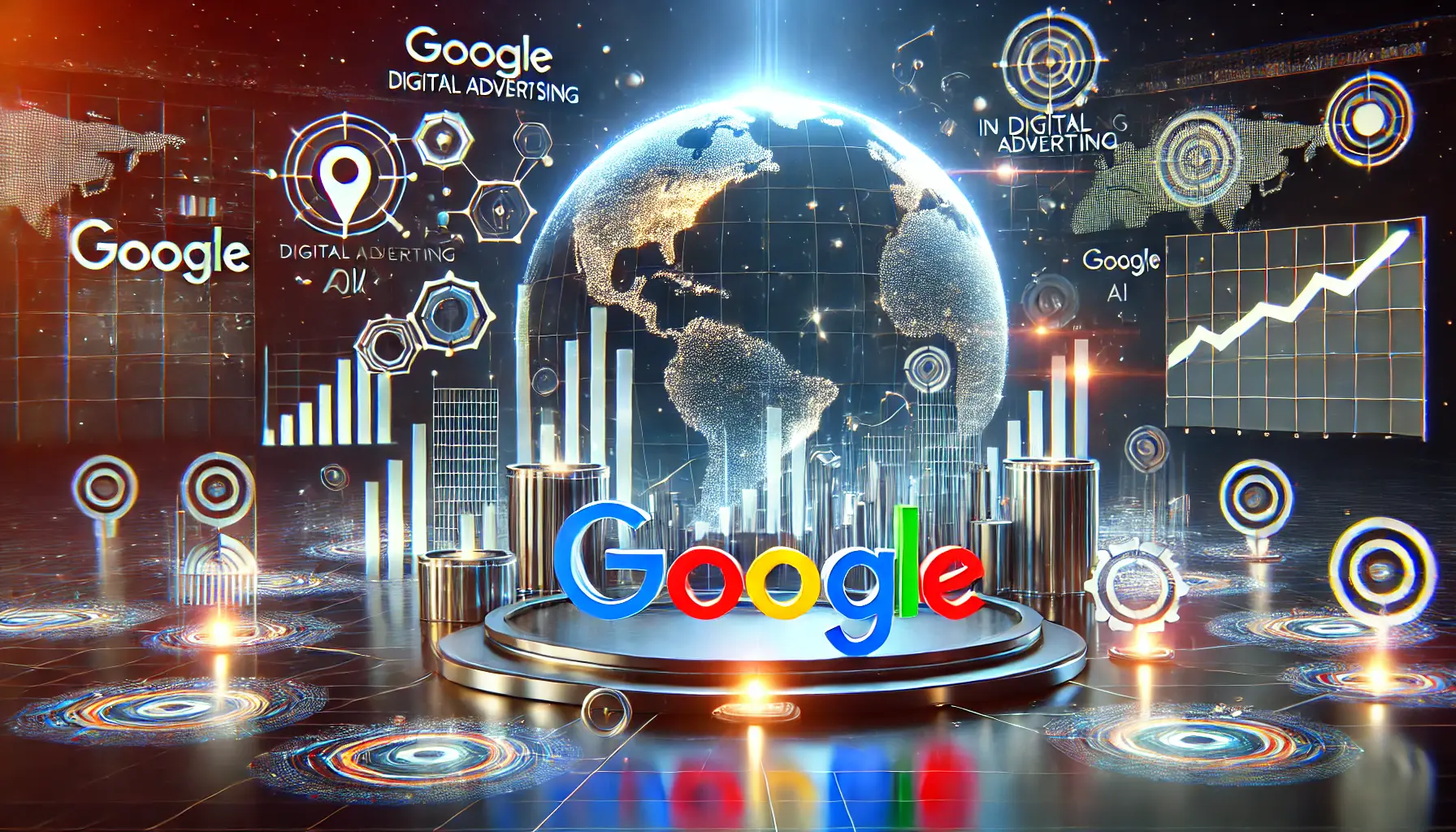In 2024, Google’s advertising revenue reached unprecedented heights, solidifying its dominance in the digital ad market.
This remarkable growth was driven by several key factors that not only enhanced Google’s financial performance but also reshaped the advertising landscape.
- Google’s 2024 Ad Revenue Growth and Key Drivers
- Breakdown of Google’s Advertising Revenue Streams
- Influence of AI on Google’s Advertising Success
- Competitive Landscape: Google’s Position in the Ad Market
- Future Outlook: Projections for Google’s Advertising Revenue
- Final Thoughts: Google’s Advertising Revenue Insights
- Frequently Asked Questions about Google’s Ad Revenue
Google’s 2024 Ad Revenue Growth and Key Drivers
Understanding the elements behind Google’s ad revenue surge offers valuable insights into the evolving dynamics of digital marketing.
First, consolidated revenuesTotal revenues from all sources combined. for Google were up, with advertising being a key driver.
This growth underlines the efficiency of Google’s ad platforms in attracting businesses looking to reach a wide audience.
Second, the integration of AI into advertising strategies was a crucial factor.
AI advancements enabled more precise ad targeting and personalized user experiences, which resulted in higher engagement and conversion ratesThe percentage of users who complete a desired action, such as making a purchase, out of the total users reached..
This had a significant impact on Google’s overall ad revenue.
Moreover, Google’s extension into international marketsMarkets outside of a company's home country. saw a remarkable rise in its ad revenue.
By offering a variety of advertising solutions tailored to meet diverse market needs across various international locations, Google successfully diversified its user and advertiser bases.
Lastly, the diversity of advertising platforms increased significantly.
With more YouTube ads and the development of new channels, advertisers were provided with varied means to reach potential customers.
This encouraged more advertisers to invest in Google’s advertising ecosystem, boosting overall revenues.
Combined, all these factors underline Google’s strategic efforts toward increasing its ad revenue.
These initiatives propelled Google in 2024 to the peak of the digital ad market, reflecting both adaptability and innovation in a highly competitive landscape.
Google’s strategic integration of AI and expansion into international markets were the primary drivers of its exceptional ad revenue growth in 2024.
These advancements highlight Google’s adaptability and leadership in the competitive digital advertising sector.
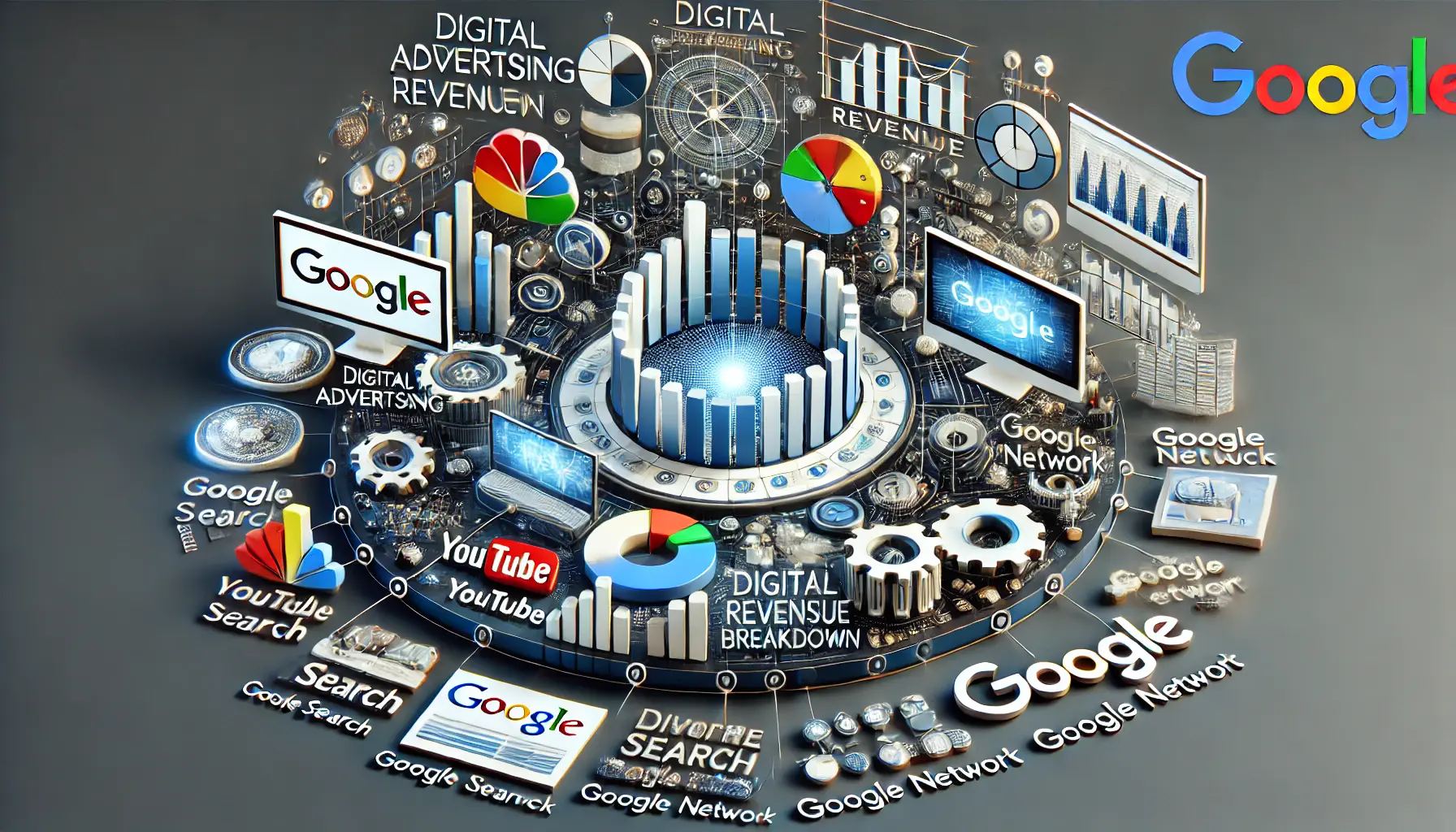
Visual breakdown of Google’s advertising revenue streams.
Breakdown of Google’s Advertising Revenue Streams
In 2024, Google’s advertising revenue reached unprecedented heights, reflecting its dominance in the digital ad market.
Understanding the breakdown of these revenue streams provides valuable insights into the company’s financial triumphs.
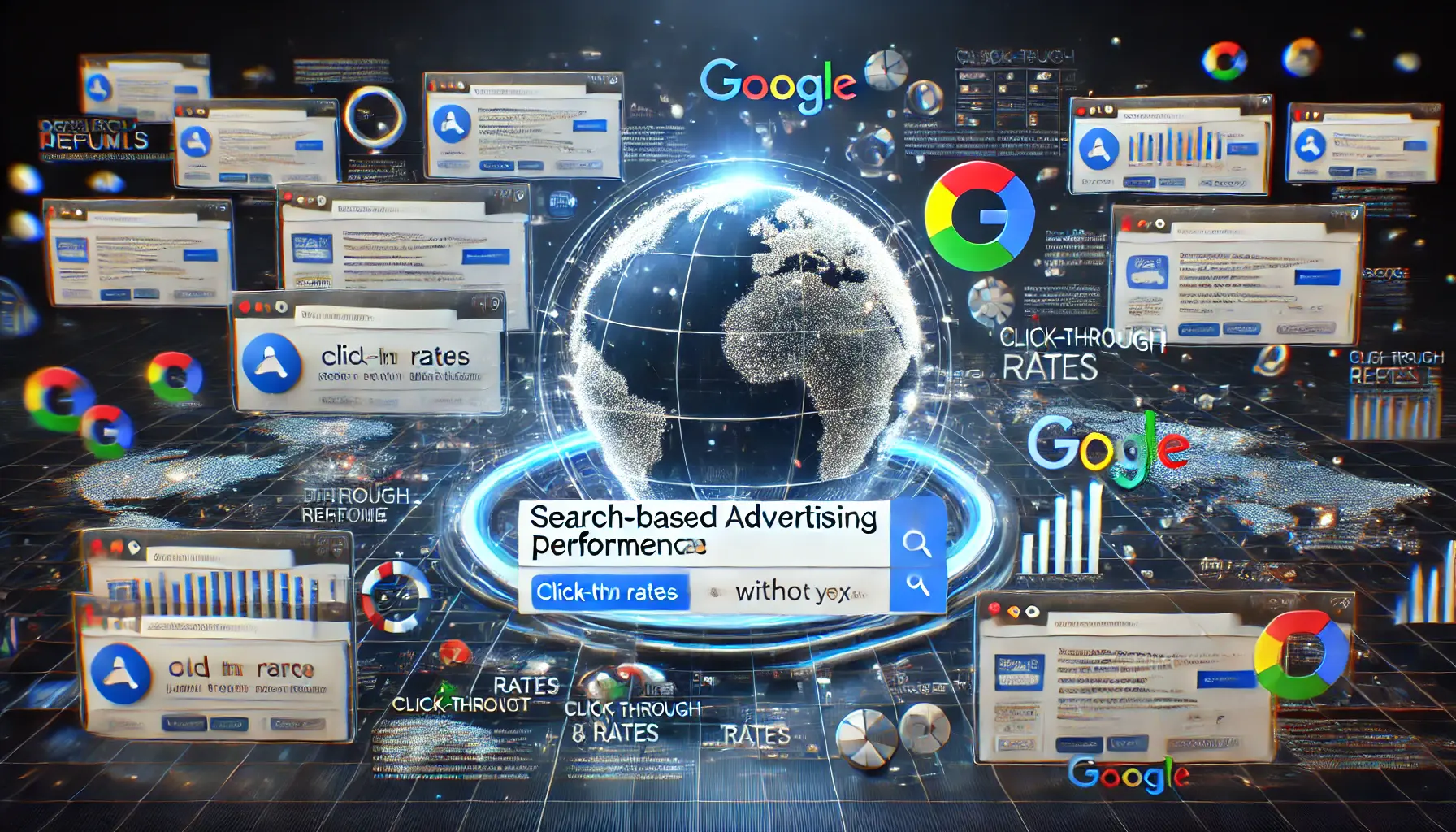
Visual representation of search-based advertising performance in Google Search.
Search and Other Advertising Performance
Google’s core service, Search, remains the main contributor to ad revenue.
In the third quarter of 2024, revenue from Google Search and other advertising reached $49.4 billion, up 12% year-over-year.
This growth indicates that search-based advertising remains a fundamentally valuable way for businesses to reach consumers.
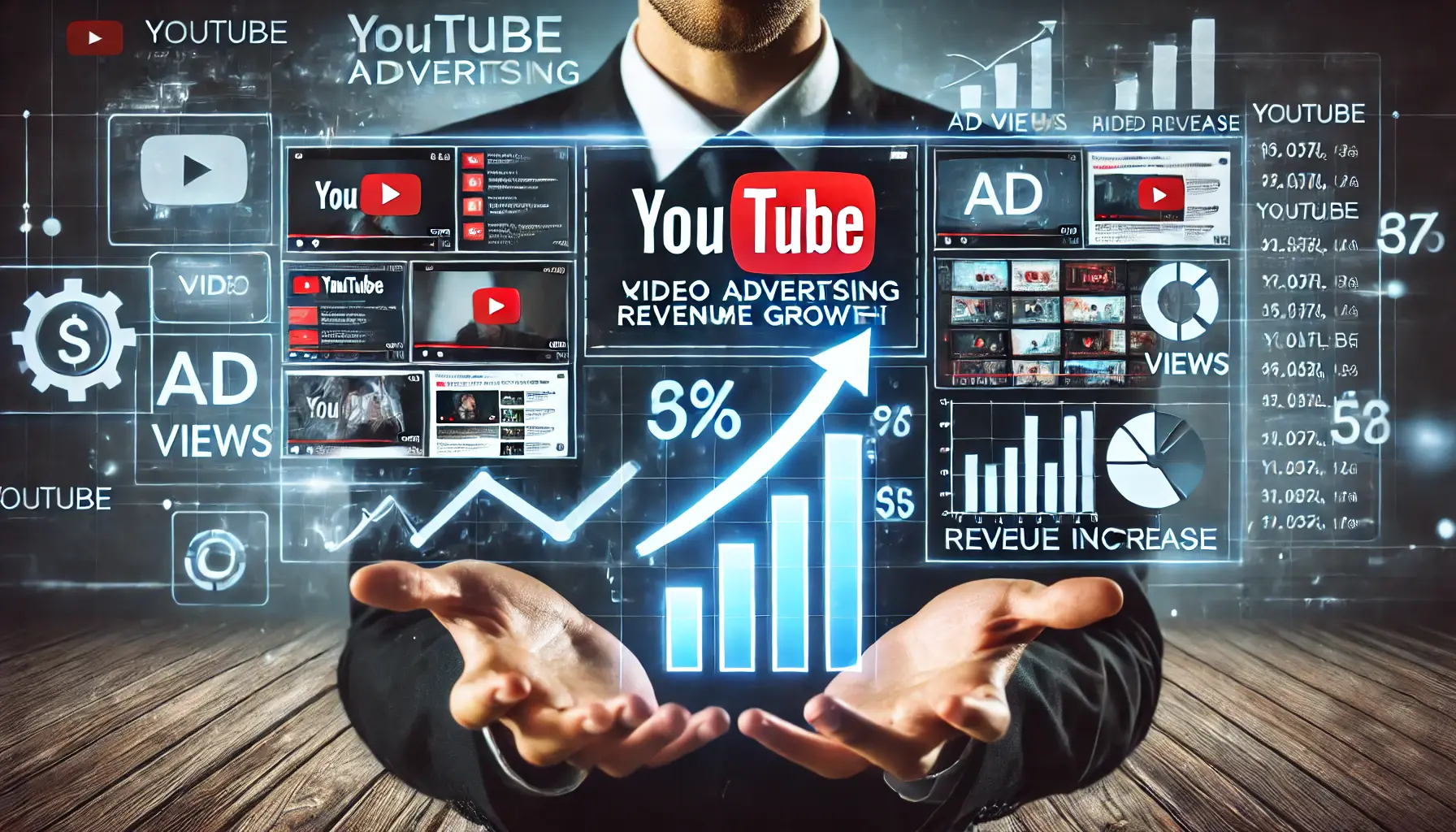
Visual representation of YouTube advertising revenue growth.
YouTube Advertising Revenue Growth
YouTube is still a significant contributor to Google’s ad revenue.
In Q3 2024, YouTube ads generated $8.9 billion, reflecting a 12% year-over-year growth.
The platform’s ability to engage audiences through video content makes it a popular medium for advertisers aiming to improve brand visibility and engagement.
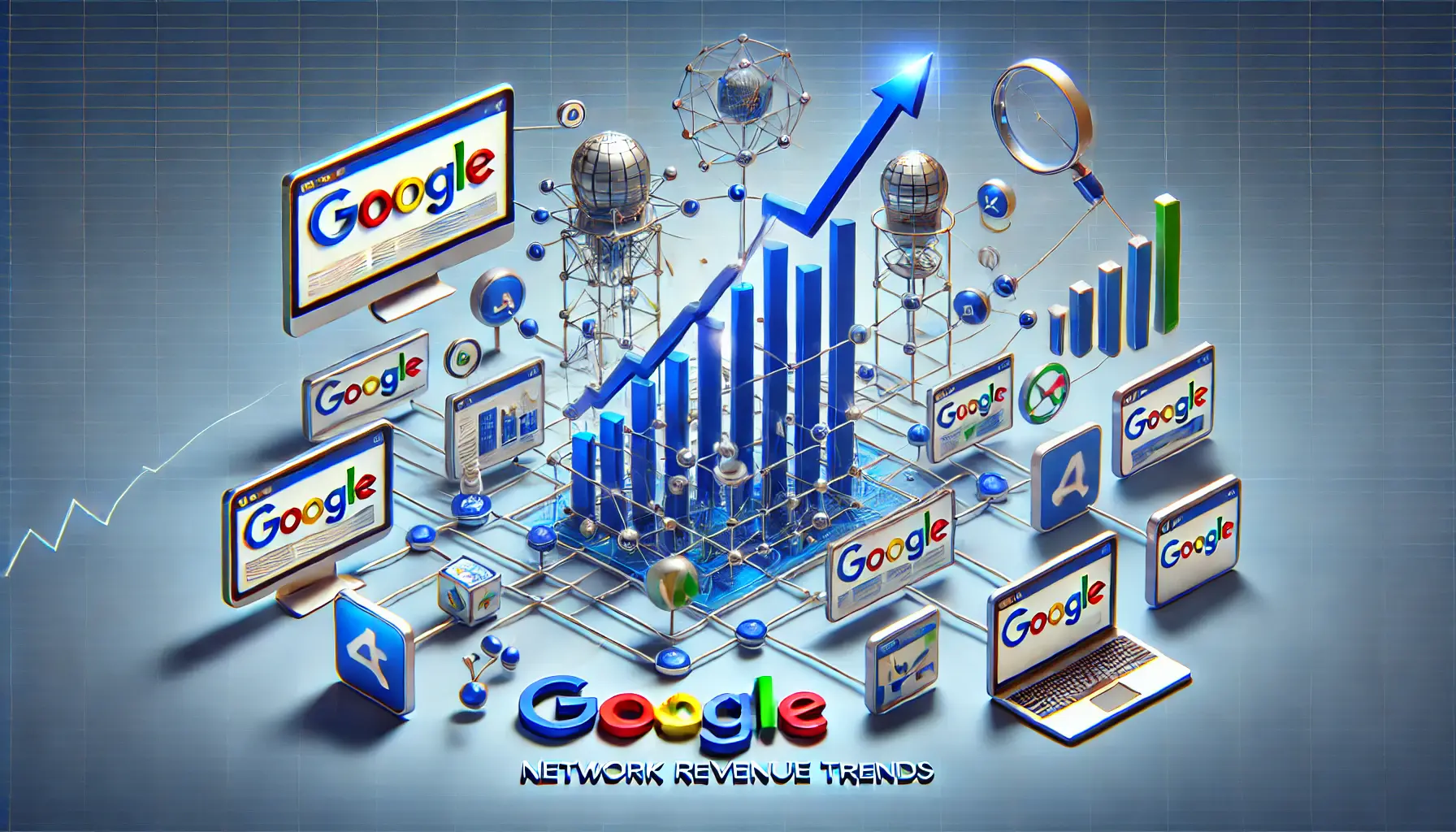
Visual representation of Google’s Network Revenue trends.
Google Network Revenue Trends
The Google Network, which includes ads shared across partner websites and apps, brought in $7.5 billion in Q3 2024.
However, this marks a 2% decrease from the same quarter in the prior year, potentially indicating challenges within this segment.

Visual representation of emerging advertising channels.
Emerging Advertising Channels
Beyond mainstream platforms, Google is exploring new paths for advertising to diversify its revenue streams.
This includes investments in AI-powered advertising solutions and expanding ad placements across Google’s services, such as Google Maps and Discover.
These emerging channels offer innovative ways for advertisers to reach targeted audiences, potentially driving further growth in Google’s ad revenue.
Collectively, these revenue streams highlight Google’s multifaceted approach to digital advertising, leveraging both established and emerging platforms to maintain its market leadership.
A detailed breakdown of Google’s revenue streams reveals the significant contributions of Search, YouTube, and emerging channels, emphasizing the importance of diversified platforms in sustaining growth.

Visual representation of AI’s influence on Google’s advertising success.
Influence of AI on Google’s Advertising Success
In 2024, artificial intelligence (AI) significantly enhanced Google’s advertising capabilities, driving substantial growth in ad revenue.
Let’s explore how AI has been integrated into various aspects of Google’s advertising ecosystem.

Visual representation of AI in ad targeting.
Integration of AI in Ad Targeting
AI has revolutionized ad targeting by enabling more precise audience segmentation and personalized ad delivery.
Through advanced machine learning algorithmsA type of AI that allows systems to learn and improve from data without being explicitly programmed., Google analyzes user behavior, search patterns, and demographic data to serve ads that resonate with individual users.
This precision increases the likelihood of engagement and conversion, benefiting advertisers and enhancing the user experience.

Visual representation of advancements in AI-powered search features.
Advancements in AI-Powered Search Features
Google’s AI-powered search features have evolved to provide more relevant and context-aware results.
The introduction of generative AIA type of artificial intelligence that creates new content, such as text or images, based on learned patterns. models, such as Gemini 2.0, allows for a deeper understanding of user queries, facilitating the delivery of more accurate and helpful advertisements alongside search results.
This advancement ensures that users receive information tailored to their needs, while advertisers reach their target audiences more effectively.

Visual representation of AI’s role in enhancing user engagement.
AI’s Role in Enhancing User Engagement
AI-driven innovations have led to the creation of more engaging ad formats.
For instance, the use of generative AI enables the development of interactive and immersive advertisements that capture user attention.
Additionally, AI assists in optimizing ad creatives by analyzing performance data and suggesting improvements, resulting in higher user engagement and better campaign outcomes.

Visual representation of the future of AI in advertising.
Future Prospects of AI in Advertising
The future of AI in advertising holds immense possibilities.
Anticipated developments include:
- Hyper-Personalization: Delivering ads targeted to individual preferences and behaviors in real-time.
- Automated Content Creation: Using AI to develop ad creatives efficiently, reducing the time and cost of production.
- Enhanced Predictive Analytics: Using AI to predict market trends and consumer behavior, enabling proactive ad strategy adjustments.
As AI technology continues to advance, it is expected to make advertising even more integrated and innovative, offering solutions that drive success for advertisers and value to users.
AI revolutionized Google’s advertising capabilities by enabling precise targeting, enhancing user engagement, and optimizing campaign performance, making it a cornerstone of their 2024 success.
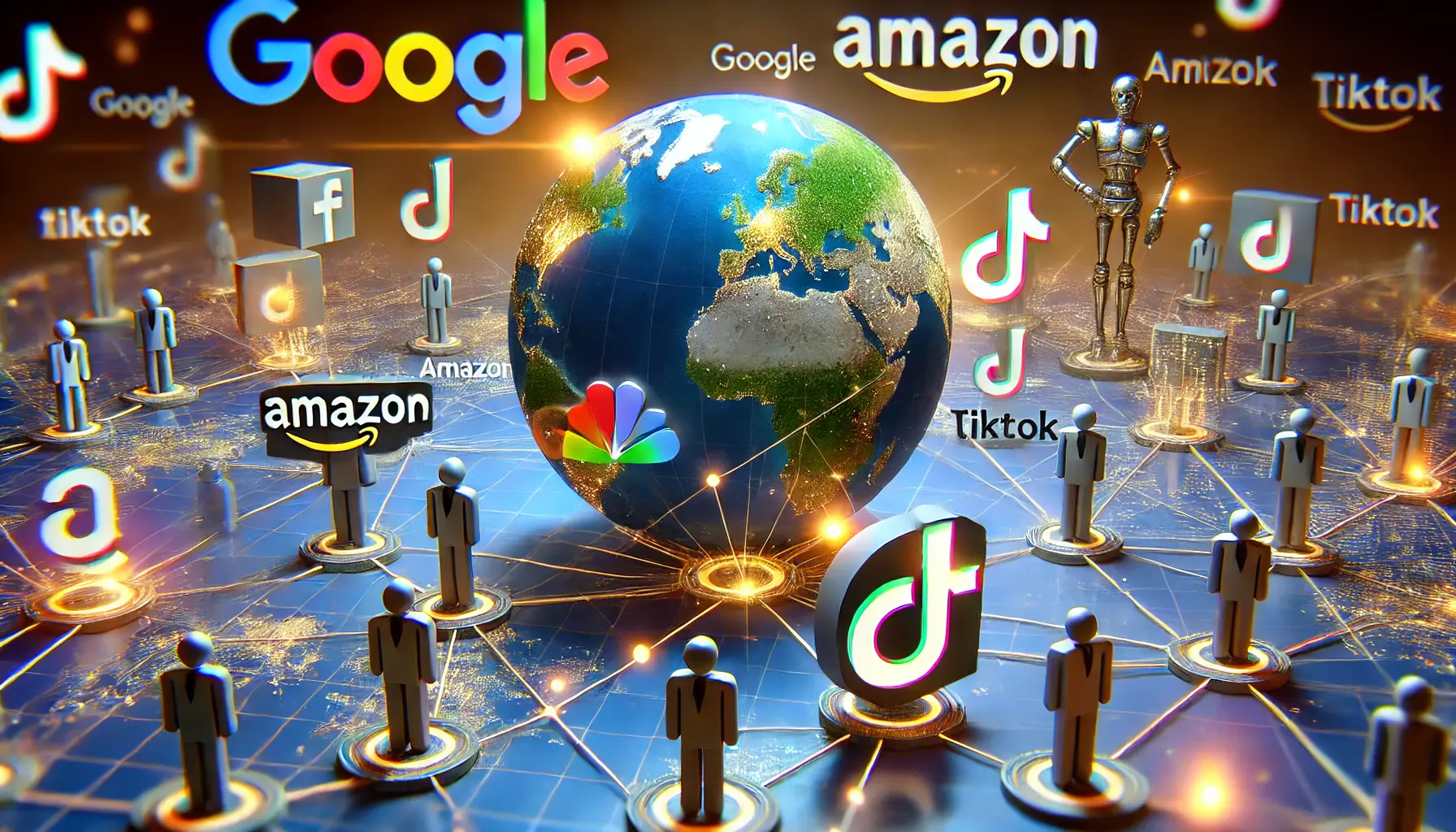
Visual representation of the competitive landscape in digital advertising, highlighting Google’s position.
Competitive Landscape: Google’s Position in the Ad Market
In 2024, Google’s advertising revenue reached unprecedented heights, solidifying its dominance in the digital ad market.
However, the competitive landscape is evolving, with significant developments shaping Google’s position.

Visual representation of the competition between Google and its major competitors in digital advertising.
Comparison with Major Competitors
Google continues to lead the global search engine market, holding a substantial share of search volume.
However, competitors like Amazon and TikTok are making notable strides.
Amazon’s rise to dominance in the digital advertising space is a significant industry shift, marking the first major threat to Google and Meta in the past decade.
This is largely due to Amazon’s commanding presence in the U.S.
e-commerce market, controlling roughly 40% as of 2024.
This position provides Amazon with unparalleled consumer data and a unique ability to sell ads within its own e-commerce ecosystem.
Additionally, TikTok has introduced ad targeting based on user search queries, posing a direct threat to Google’s core business.

Visual representation of market share analysis in the digital advertising space.
Market Share Analysis
Despite increased competition, Google maintains a significant share of the digital advertising market.
In 2024, Google Ads held a 61.73% market share in the pay-per-click (PPC) market, underscoring its continued influence.
However, the rise of competitors signals a dynamic and challenging market environment.

Visual representation of regulatory challenges in digital advertising.
Impact of Regulatory Challenges
Google faces regulatory scrutiny concerning its advertising practices.
In recent antitrust trials, the U.S.
Department of Justice accused Google of operating an ad technology monopoly that excludes potential rivals and inflates costs for publishers and advertisers.
These legal challenges could have far-reaching implications for Google’s operations and market strategies.

Visual representation of strategies to maintain market leadership in digital advertising.
Strategies to Maintain Market Leadership
To sustain its leading position, Google is implementing several strategies:
- Innovative Integration of AI: Striving to improve ad targeting and user engagement with advanced AI technologies.
- Expansion into New Ad Platforms: Increasing ad placements across YouTube, Google Maps, and Discover to reach wider audiences.
- Emphasis on User Privacy: Developing privacy-focused ad solutions to meet regulatory requirements and retain user trust.
These initiatives aim to help the company retain its competitive advantage in the fast-changing digital advertising environment.
Google’s leadership in digital advertising is challenged by competitors like Amazon and TikTok, prompting innovations in AI and privacy-focused solutions to sustain its dominance.
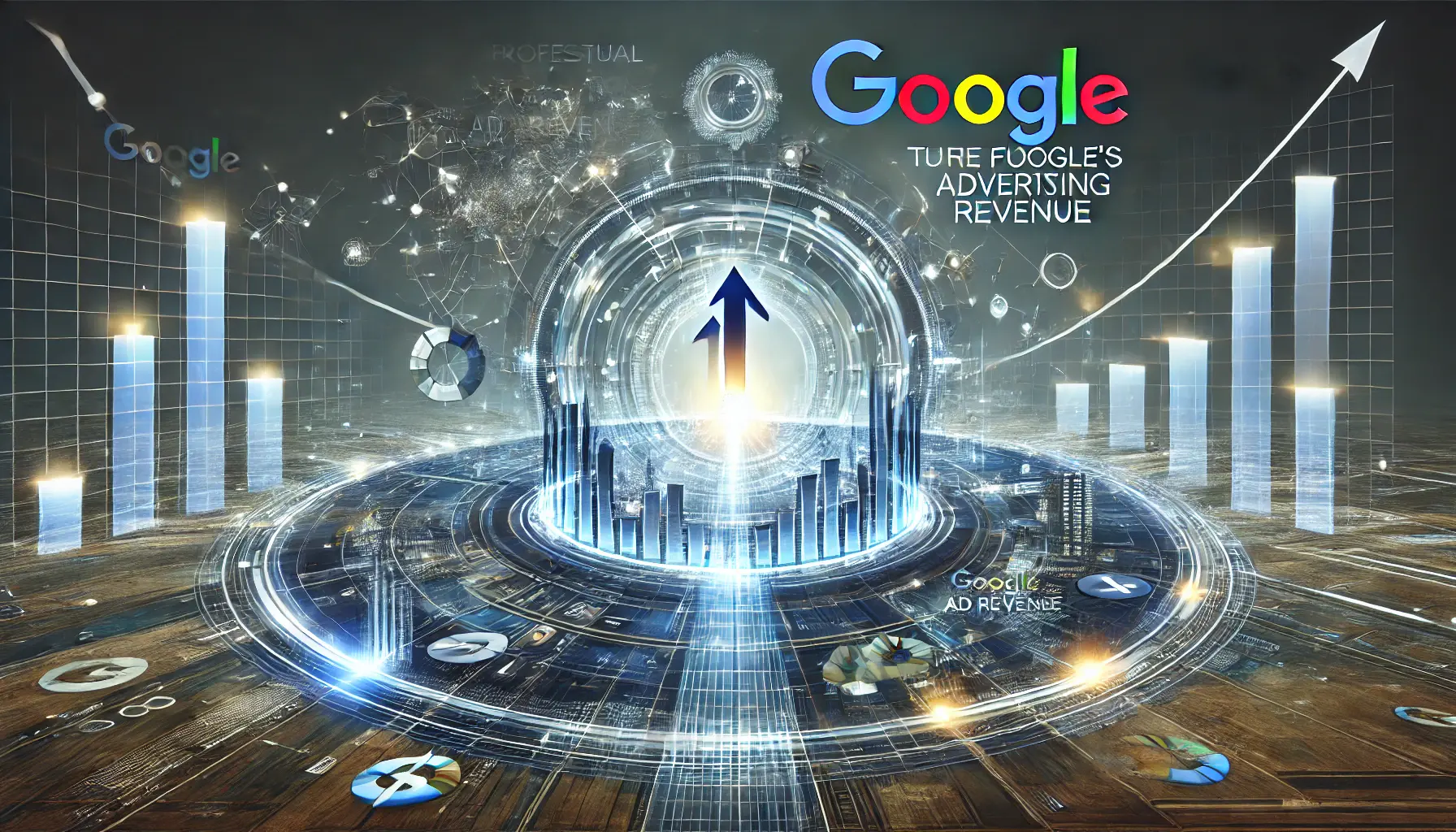
Visual representation of the future outlook for Google’s advertising revenue.
Future Outlook: Projections for Google’s Advertising Revenue
As we look ahead, Google’s advertising revenue is poised for continued growth, driven by strategic initiatives and emerging technologies.
Let’s explore the projections and factors influencing this trajectory.

Visual representation of revenue projections for 2025 and beyond.
Revenue Projections for 2025 and Beyond
Industry analysts forecast a steady increase in Google’s ad revenue over the coming years.
Projections indicate:
- 2024: Approximately $273.37 billion, marking a 14.9% annual growth.
- 2025: $296.15 billion.
- 2026: $318.33 billion.
- 2027: $340.18 billion.
These figures clearly outline the strength of Google’s position within digital advertising.
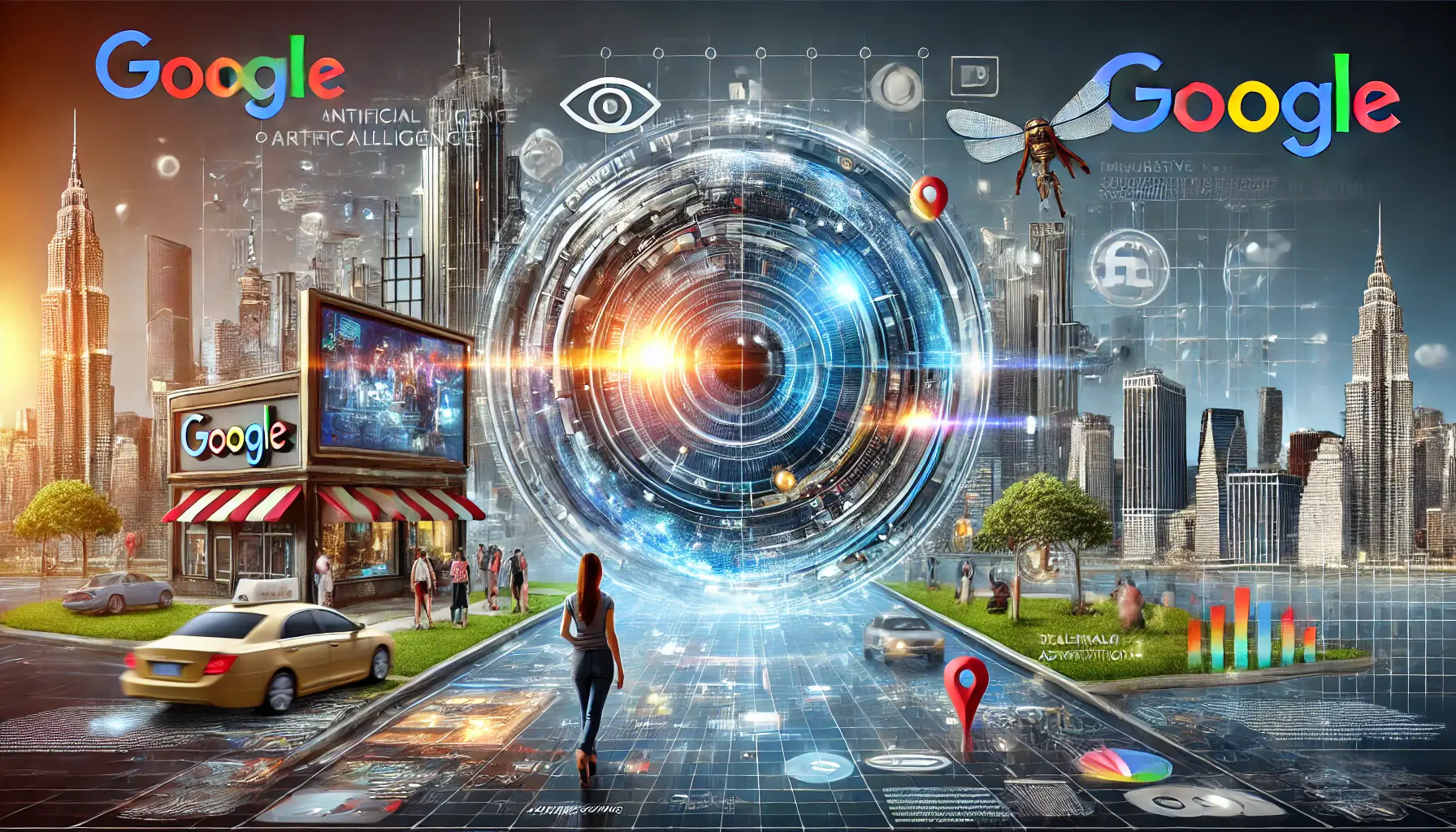
Visual representation of emerging technologies shaping Google’s advertising strategies.
Emerging Technologies Likely to Shape Advertising Strategies on Google
The integration of emerging technologies is bound to further enhance Google’s advertising capabilities.
Key developments include:
- Artificial Intelligence (AI): AI continues to revolutionize ad targeting, personalization, and performance optimization, enabling more effective and efficient campaigns.
- Augmented Reality (AR) and Virtual Reality (VR): These technologies offer immersive ad experiences, allowing consumers to interact with products in innovative ways, thereby increasing engagement.
- Blockchain Technology: Enhances transparency and security in digital advertising transactions, building trust between advertisers and consumers.

Visual representation of market dynamics and competitive pressures in digital advertising.
Market Dynamics and Competitive Pressures
While Google continues to be at the forefront, the digital advertising space is becoming increasingly competitive.
Rivals such as Amazon and Meta are expanding their ad services, and newer platforms are capturing market share.
To navigate this scenario, Google’s innovative focus areas include:
- Innovative Ad Formats: Developing new and engaging ad experiences that attract both advertisers and users.
- Global Market Expansion: Tailoring advertising solutions to diverse markets to broaden its reach.
- Regulatory Compliance: Adhering to evolving data privacy laws to maintain user trust and avoid legal challenges.
By leveraging technological advancements and strategic planning, Google is well-positioned to sustain its growth in the dynamic digital advertising arena.
Projections indicate steady growth in Google’s ad revenue, driven by advancements in AI, AR, and blockchainA decentralized, distributed ledger technology used for secure and transparent data transactions., ensuring sustained market leadership despite competitive pressures.
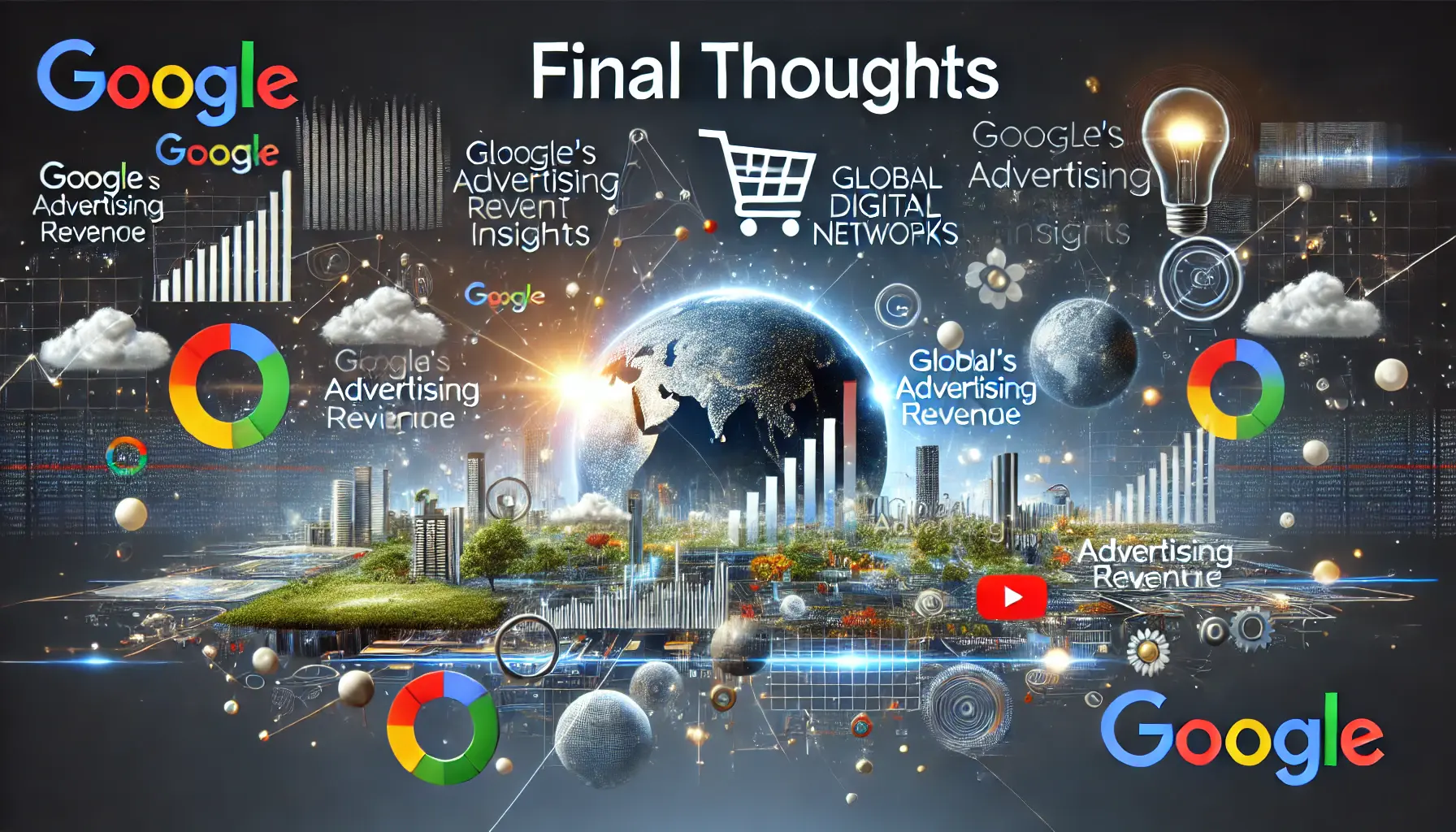
Visual representation of final thoughts on Google’s advertising revenue insights.
Final Thoughts: Google’s Advertising Revenue Insights
In 2024, Google demonstrated its dominance in the digital advertising landscape, achieving unprecedented heights in revenue generation.
By leveraging innovation, strategic expansion, and advanced technologies, Google reinforced its position as a leader in the highly competitive ad market.

Visual representation of key takeaways from Google’s advertising success.
Key Takeaways from Google’s Success
The comprehensive analysis of Google’s advertising performance in 2024 revealed several pivotal factors driving its financial triumphs:
- AI Integration: Artificial intelligence played a transformative role in ad targeting, personalization, and campaign optimization, significantly increasing user engagement and conversion rates.
- Platform Diversification: The expansion of advertising opportunities across platforms such as YouTube, Google Maps, and Discover provided a range of channels for advertisers to reach audiences.
- Global Market Reach: Tailored solutions for international markets broadened Google’s advertiser and user base, ensuring sustained growth.
- Innovative Ad Formats: The introduction of interactive and immersive ad experiences kept Google ahead in engaging modern audiences.

Visual representation of challenges and strategic adaptations in digital advertising.
Challenges and Strategic Adaptations
Despite its achievements, Google faced notable challenges, including heightened competition from platforms like Amazon and TikTok and increasing regulatory scrutiny.
To address these challenges, Google focused on:
- User Privacy: Developing privacy-centric ad solutions to address evolving regulatory requirements and build trust.
- Technological Advancements: Continued investments in emerging technologies like augmented reality and blockchain ensured innovation.
- Market Dynamics: Strategic adaptations to competitive pressures helped Google maintain its market leadership.

Visual representation of ‘The Road Ahead’ in the context of digital advertising.
The Road Ahead
As the digital advertising market continues to evolve, Google’s ability to adapt and innovate will remain key.
Projections for sustained growth in ad revenue underscore the company’s resilience and strategic foresight.
With a strong focus on emerging technologies, customer trust, and global expansion, Google is likely to further solidify its position as an industry leader.
Through its multifaceted approach and relentless pursuit of excellence, Google sets a benchmark in the digital advertising realm, offering invaluable insights for marketers and businesses alike.
Google’s 2024 ad revenue achievements underline its ability to innovate and adapt, setting benchmarks for excellence in the digital advertising industry.
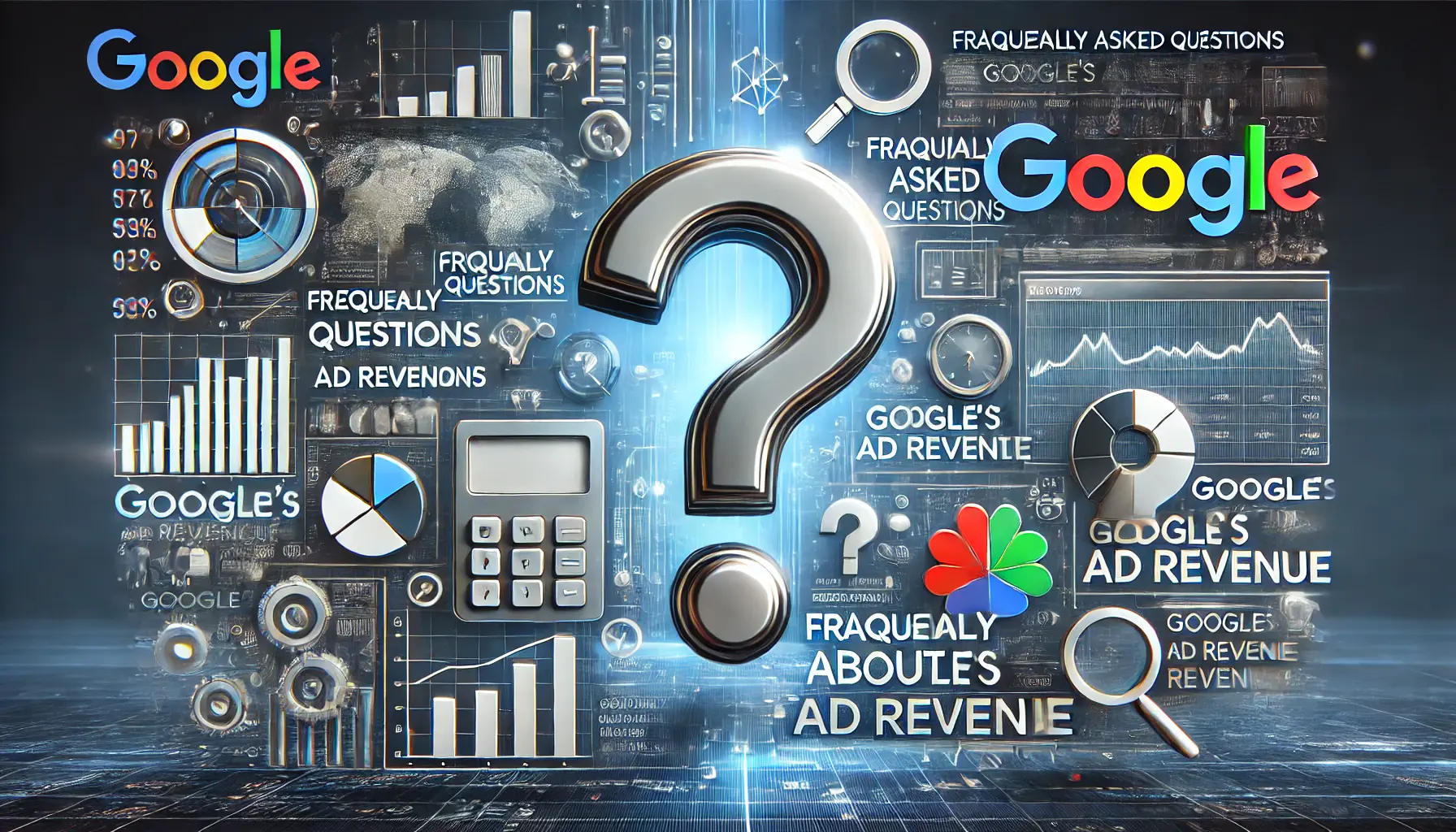
Visual representation of frequently asked questions about Google’s ad revenue.
Your campaigns can be managed by an agency specialized in Google Ads, check out our service page.
Frequently Asked Questions about Google’s Ad Revenue
In 2024, Google’s advertising revenues reached an estimated $237.9 billion, revealing high growth in the digital advertising market.
Key drivers are AI-powered monetization, platform expansion, entry into more geographic markets, and new innovative ad formats.
AI enhanced ad targeting, personalization, and campaign optimization, leading to increased user engagement and higher conversion rates.
Google Search, YouTube, and the Google Network were major contributors, with Search and YouTube showing notable year-over-year growth.
Google encountered increased competition from platforms like Amazon and TikTok, as well as regulatory scrutiny over its advertising practices.
Google developed privacy-centric ad solutions to comply with evolving regulations and maintain user trust.
Analysts forecast continued growth, with revenues expected to reach approximately $340.18 billion by 2027.
Google is investing in AI, augmented reality, and blockchain to enhance ad experiences and maintain its market leadership.
As of 2024, Google held a 61.73% market share in the pay-per-click (PPC) market, underscoring its dominance.
